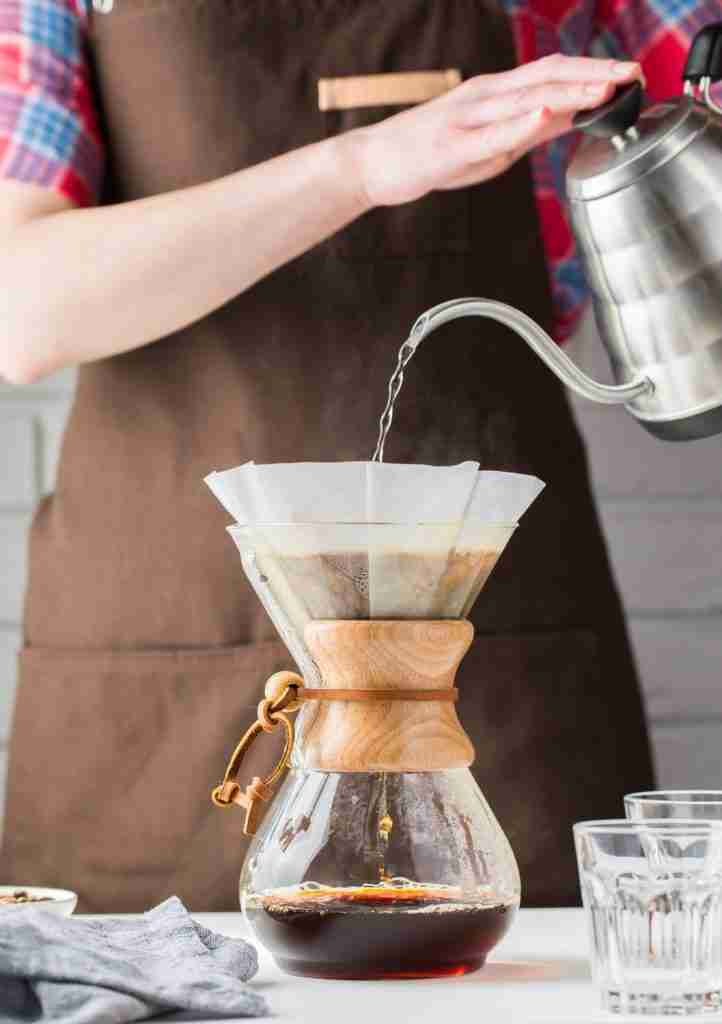
There are a few key things you have to know about brewing coffee no matter what brewing method you use. There is an optimal coffee to water ratio that does not change no matter what method is used.
People will always recommend different ratios because it depends on how you like your coffee. So how do you know what is the best brew ratio to use?
There are other things you have to consider with your coffee to water ratio. The type of water, grind, temperature, and the amount of contact with the coffee. To make your coffee taste better you have to change one of these variables at a time.
How much coffee grounds per cup
As a standard, we would say a 1:17 ratio is the normal ratio most people use and recommend. However, you can adjust this to however you prefer.
This means 1 gram of coffee grounds per 17 grams of water. This allows for the “ideal” extraction for manual and automatic pour-over methods.
It is highly recommended by all coffee enthusiasts it is best to weigh all your coffee grounds. We use a simple basic kitchen scale by Etekcity.
This also comes out to about two tablespoons of ground coffee for every six ounces of water if you do not have a scale at home.
This ratio also depends on the type of brewing method you are using. For french presses and other brewing methods that require full exposure and immersion of coffee grounds, you may want to use less coffee or more water. This is because, there is more surface area, time, and contact with the coffee while it steeps.
How to make adjustments
We will be focusing on pour-over coffee. Pour-over coffee has been around for decades and there are a few tips that you have to follow when brewing this way to get the taste you want.
First, you have to use fresh coffee beans. This is the most basic and important part. Do not start playing around with your grind and proportions until you get this part right.
Then, you will adjust your coffee grind and water proportions to your tastes.
How to choose the right beans for you
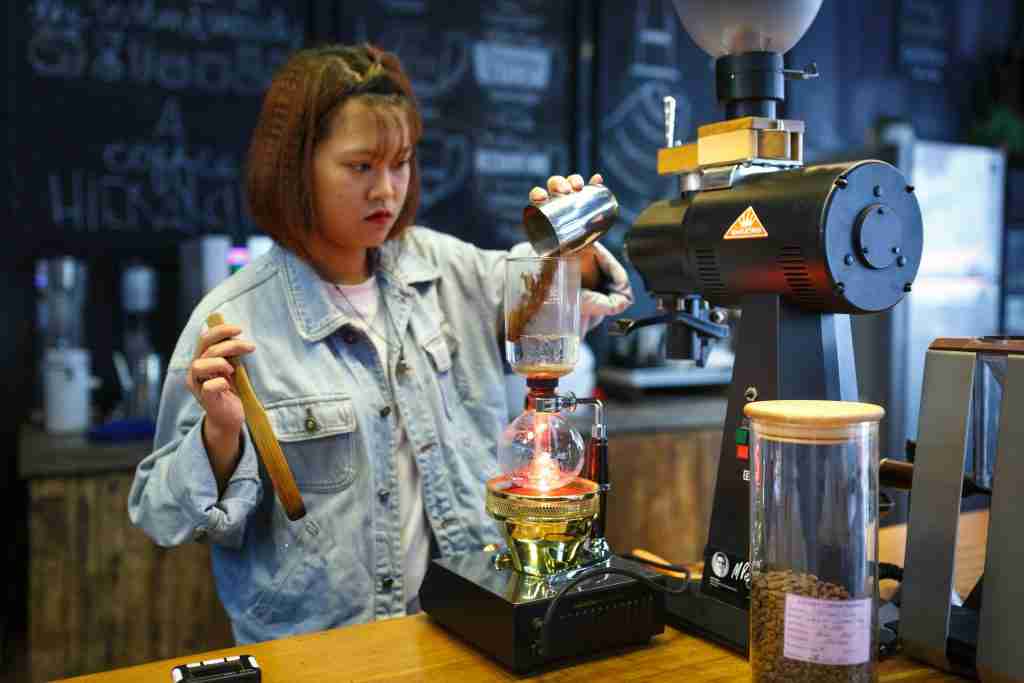
Deciding on a coffee bean may be confusing for many coffee drinkers. There are numerous brands and even grocery stores selling “fresh” coffee beans. Here are some tips on picking the right beans for you.
Know the type of coffee beans you prefer, Arabica or Robusta. Robusta is the cheaper of the two with higher caffeine content and a stronger bitter flavor. This is good for someone who needs their caffeine fix and likes dark bitter notes in their coffee. Arabica is considered a higher grade, but it depends on how it is grown and where it is grown. Usually, it has a lighter taste and is the bean most roasters choose to be light or medium roasted.
Find a roast that you like and pick similar beans. This is usually a trial and error process. Some people prefer lighter coffees while others prefer dark coffees. It is all up to the consumer. If you prefer a strong taste and less acidity go for a darker roast. On the other hand, if you like acidity go lighter.
Go to a roaster such as Devocion which is one of our favorite local roasters. We recommend you search for your local roasteries and head there every once in a while.
Lastly, check the roast date of the coffee you’re buying. This is the most important part of purchasing freshly roasted coffee. All roasters should have a date and you should pay attention to it. It is usually good to buy beans less than a week old.
If you want to try to roast your own coffee click here to make the freshest roasted coffee.
Adjusting your grind settings
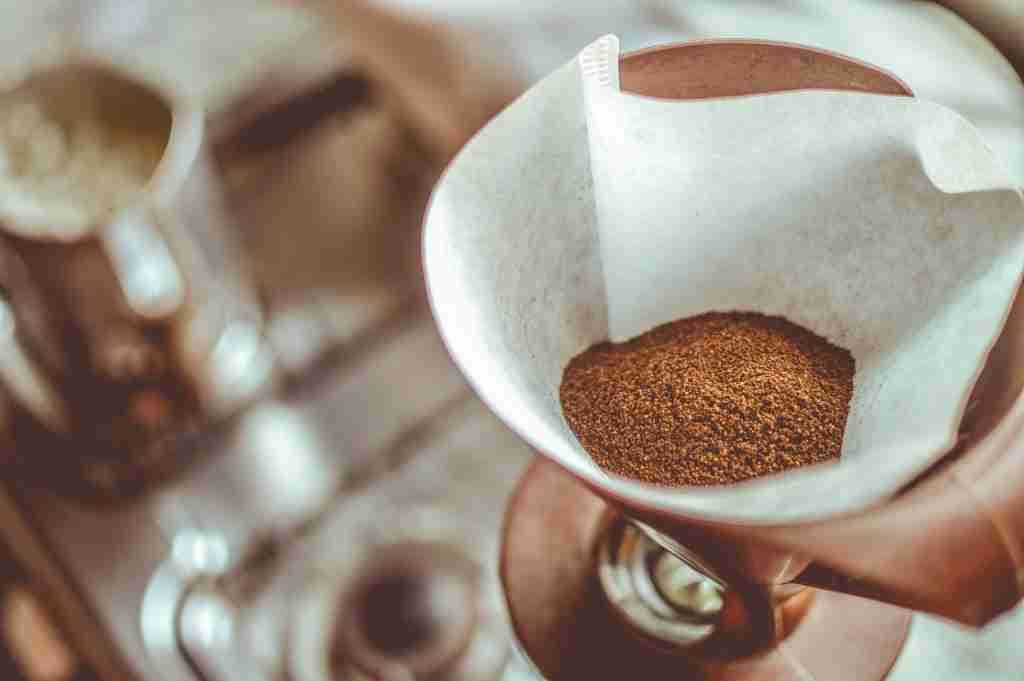
Grinding your coffee right before you drink your coffee is another important step you should consider if you aren’t doing this already. This is because when you pregrind coffee it begins to oxidize and age faster resulting in a staler coffee.
Making sure your grinder is in the correct setting for how you are brewing is also very important. Use a burr grinder because blade grinders unevenly chop and shatter your coffee beans while burrs consistently grind the bean.
Your grind size affects the extraction because of the amount of surface area that is in contact with the water. The smaller the particles are the more contact and quicker they will extract. While the reverse is true too, so you have to balance how finely to grind your coffee.
If you grind too fine the coffee may taste too bitter, and if you ground too coarse your coffee will be sour and lack depth.
Our rule of thumb for pour-over brewing is to grind your beans like Kosher salt to start and adjust from there. If you find your coffee tasting too bitter make your grind coarser, but if it is too sour make it finer.
To choose a burr grinder if you don’t have one read our guide explaining every about burr grinders here.
Changing the brewing ratio
As a general rule, as stated before, we recommend a standard ratio of 1 gram of coffee to 17 grams of water. For example, we could have 50 grams of coffee in our Chemex and pour 850 grams of water. Then, we would go from there and adjust. More water for lighter coffee and less water for darker coffee. This should be the last thing you adjust.
Pour-over brewing technique
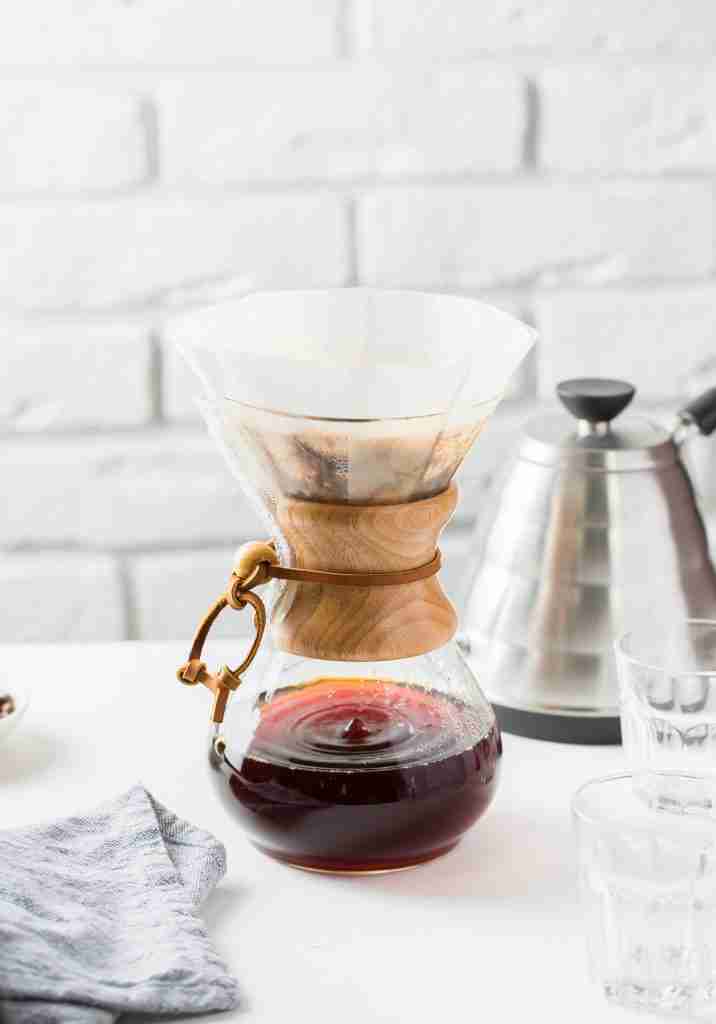
So you may be thinking… Why does pour-over coffee require a special technique? The answer to this is because there is a lot of human technique to the brewing of pour-over coffee because the water is constantly draining and not all the grounds are exposed to the water at the same time.
Without proper pouring technique, the water will take the path of least resistance resulting in an inconsistent brew. The grounds along the path of the water will be over-extracted while the dryer areas will not be extracted enough.
If you have experienced a pour-over coffee that is both bitter and sour it is because you’ve messed up the pouring technique.
To solve this you have to saturate all the grounds evenly with a slow stream of water. However, there is one common method both these pouring methods require and it is called blooming your coffee.
Bloom

If you’ve poured water over freshly ground coffee beans you’ve probably seen some bubbling when you hydrate the grounds. This is the carbon dioxide that was built up during the roasting process that is escaping. This is usually more common in light roasts and fresh coffee.
The carbon dioxide repels the water and prevents proper extraction of the coffee so you have to “bloom” your coffee.
To do this after you have measured out your water pour in just enough to cover all your beans. Then wait for 30 – 45 seconds until the grounds have settled and all the bubbles are gone.
Our preferred method by Scott Rao
- Rinse your filter
- Dump your rinse water
- Add your coffee
- Pre-wet / bloom your coffee
- Gently stir your grounds to saturate all your beans
- After 45 seconds start your main pour
- Gently stir the grounds
- After 1 minute and 45 seconds swirl it around
- Wait until extraction is complete
- Enjoy!
Coffee to water ratio for french press
The same principles apply for brewing with a french press, but because the beans are usually ground coarser and are in direct contact with the water the ratios are different.
Because the grounds are coarser you will use less water than pour-over brewing to create an equally as bold and heavy coffee.
For french press, a normal coffee would be about 1 gram of coffee grounds to 13 grams of water.
For a strong and bold brew try a ratio of 1 gram of coffee to 10 grams of water.
Lastly, for a light, and tea-like coffee try a ratio of 1 gram of coffee to 16 grams of water.
Ultimately, like pour-over brewing, it comes down to your personal taste and some trial and error.
Effects of water temperature on coffee
The optimal brewing temperature for your coffee should be between 195 and 205 degrees Farenheight as recommended by most baristas. This is 90.56 – 96.11 degrees Celcius if you are not in the United States.
This temperature allows for the optimal extraction of all the good flavors in your coffee. Colder water results in an under-extracted coffee which may be sour and lose the depth of the coffee.
Optimal serving temperature for a coffee right after brewing should be 180 – 185 degrees Farenheight according to research.
Conclusion
If you want to know the golden ratio to make the best coffee use 1 gram of coffee to 17 grams of water. Of course, different brewing methods and preferences will require different measurements. We recommend you to experiment and decide what you like best!

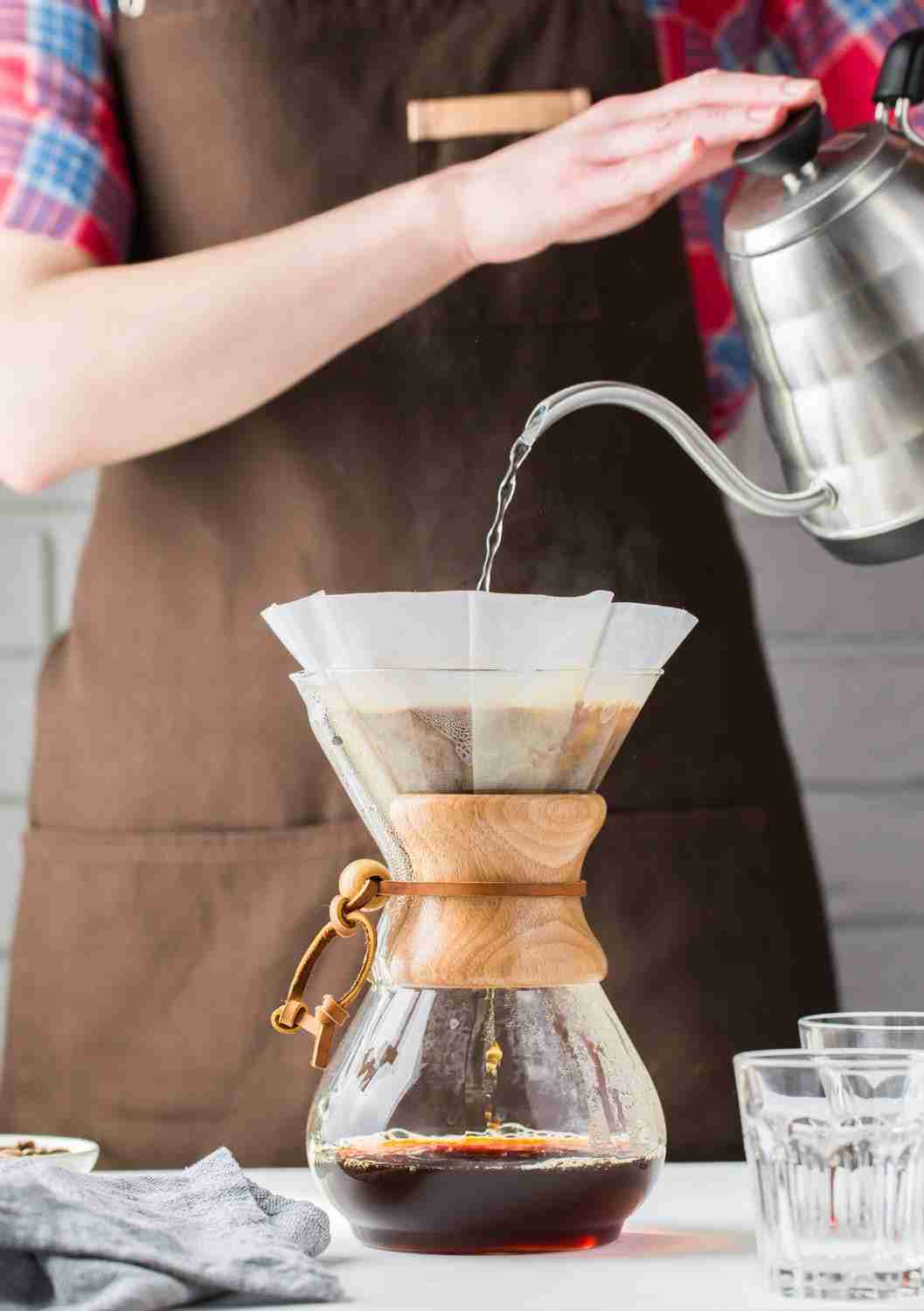
I really love and enjoyed reading this article. Personally, as I am a barista it is very useful to me and when you describe it scientifically, it was awesome. I hope you will continue posting such incredible things and baristas will enjoy and keep improving upon it. Thanks a lot!